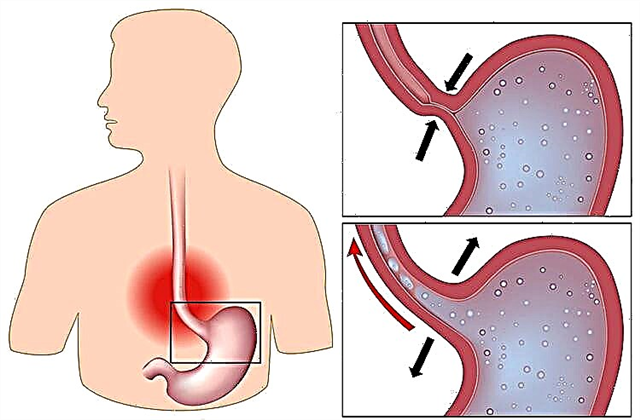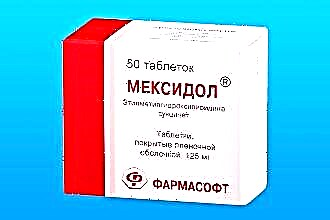What is ascites?
Ascites (dropsy) is a condition where fluid accumulates in the abdominal cavity.
Probable causes of ascites:
- peritonitis;
- alcoholic cirrhosis of the liver;
- liver cancer;
- chronic pancreatitis;
- hepatitis;
- pancreas cancer;
- ovarian cancer, heart failure;
- pericarditis;
- non-Hodgkin lymphoma;
- carcinomatosis.
The reason for the formation of ascites in chronic heart failure
The abdominal organs are located in a membrane called the peritoneum. The abdominal cavity normally contains a small amount of fluid (about 20 ml), the volume of which can vary in women, depending on the phase of the menstrual cycle. An abnormal increase in its amount occurs for various reasons, one of which is chronic heart failure. With this disease, the fluid stagnates even in the chest and lower extremities.
Heart failure occurs when the heart, for some reason, loses its ability to adequately supply oxygenated blood to the body, thus meeting the metabolic needs of the cells. HF is acute and chronic; one of the signs of the second is ascites.
Ascites symptoms:
- enlargement of the abdomen
- fast weight gain
- abdominal pain
- dyspnea
- flatulence
- nausea
- fast fatiguability
- limiting habitual physical activity
- cachexia
In addition to the symptoms of ascites, CHF has the following symptoms:
- dyspnea (shortness of breath) with exertion or at rest;
- weakness, lethargy;
- swelling of the feet, ankles, and legs
- cardiopalmus;
- inability to perform habitual physical activity;
- persistent cough with light or pinkish sputum;
- the need to urinate at night;
- loss of appetite or nausea;
- acrocyanosis;
- inability to concentrate, absent-mindedness;
- chest pain;
- sudden attacks of suffocation with cough and discharge of frothy pink sputum.
Complications of chronic heart failure:
- the formation of hernias due to increased intra-abdominal pressure;
- spontaneous bacterial peritonitis.
Dynamic observation of a patient with ascites
To diagnose the nature, cause and severity of dropsy, the following laboratory and instrumental studies are needed:
- general clinical studies (general analysis of blood, urine, glucose and protein in serum, liver function tests, coagulogram);
- testing for hepatitis B and C;
- X-ray of the chest and abdominal cavities (allows you to assess the amount of fluid, and check for the presence of hydrothorax);
- Ultrasound of the OBP allows detecting the presence of effusion in the early stages, up to 5-10 ml;
- analysis of ascitic fluid, which is carried out according to the following criteria: erythrocytes, leukocytes, protein;
- microscopy - allows you to determine the presence of pathological cells;
- bacteriological research - microscopy and bacterial culture.
To analyze the fluid that is in the abdominal cavity, it is necessary to perform abdominal paracentesis (laparocentesis).
This most informative diagnostic method can also play the role of a treatment procedure.
The management of a patient with heart failure requires careful monitoring. For this, the following diagnostic measures are performed:
- electrocardiography provides information about changes in the nature of the heart rhythm (acceleration or irregularity), indicates pathological conduction due to disruption of pacemakers or thickening of the walls of the heart. Also, the ECG allows you to assess the consequences of myocardial infarction;
- echocardiography is a recording of heart murmurs using an ultrasound machine. Thanks to this method, the cardiologist assesses the functioning of the valves, heart muscle and blood flow;
- myocardial scintigraphy with veloergometry (if the load is not contraindicated) - allows you to assess the blood supply to the coronary vessels and their response to stress.
Conservative and surgical care for the patient
A patient with heart failure who has developed edema requires immediate hospitalization in a cardiological hospital.
A set of actions aimed at helping a patient with ascites includes:
- treatment of the underlying disease;
- limiting salt intake;
- replenishment of protein deficiency;
- diuretic therapy;
- laparocentesis.
CHF therapy:
- ACE inhibitors: dilate blood vessels, lower blood pressure, improve blood flow and reduce stress on the heart;
- Angiotensin receptor blockers: the principle of action is similar to the previous drug. Prescribed for intolerance to ACE inhibitors;
- Beta blockers: slow your heart rate;
- Diuretics: remove fluid that forms swelling, thereby lowering blood pressure and improving breathing
- Digoxin: intensifies the contractions of the heart, reducing them;
- Nitroglycerin: improves blood flow in the myocardium;
- Statins: used to treat atherosclerosis;
- Anticoagulants: normalize blood clotting;
For therapeutic purposes, a puncture of the abdominal cavity is performed in such cases:
- violation of respiratory activity;
- pain in the abdomen due to fluid pressure (abdominal compartment syndrome);
- failure of conservative therapy;
Paracentesis technique:
- Treatment of the operating field with antiseptics.
- Infiltration of the skin at the site of the future puncture with an anesthetic.
- A small incision with a scalpel for catheter insertion (performed under the navel or on both sides).
- Introduction of a catheter into the abdominal cavity.
- Aspiration of liquid (performed very slowly, within 5 liters at a time).
- Removal of the catheter.
- Antiseptic treatment and application of a sterile dressing to the puncture site.
- Ultrasound control.
During therapeutic paracentesis, peritoneal fluid is necessarily taken for cytological and biochemical analysis to clarify its genesis.
Laparocentesis can be complicated by the formation of adhesions and infection, since it is an intervention in the sterile environment of the abdominal cavity.
Aspiration of liquid is carried out repeatedly as necessary. However, the need to resume punctures suggests that the pathological process is progressing and does not respond to treatment. In this case, it is important to provide full-fledged palliative care, alleviate suffering, make the patient's life as comfortable as possible and prepare for decent care.
Conclusions
The prognosis regarding the health and life of a patient who has developed ascites with heart failure can be improved by taking active therapeutic actions. However, despite the advances in modern medicine, it remains unfavorable. The presence of concomitant pathology, age, complex cardiac arrhythmias, high arterial hypertension and the presence of effusion in the pleural cavity indicate that death is inevitable. In this case, it is important to ensure a worthy completion of the life path and alleviate the suffering of the patient.



